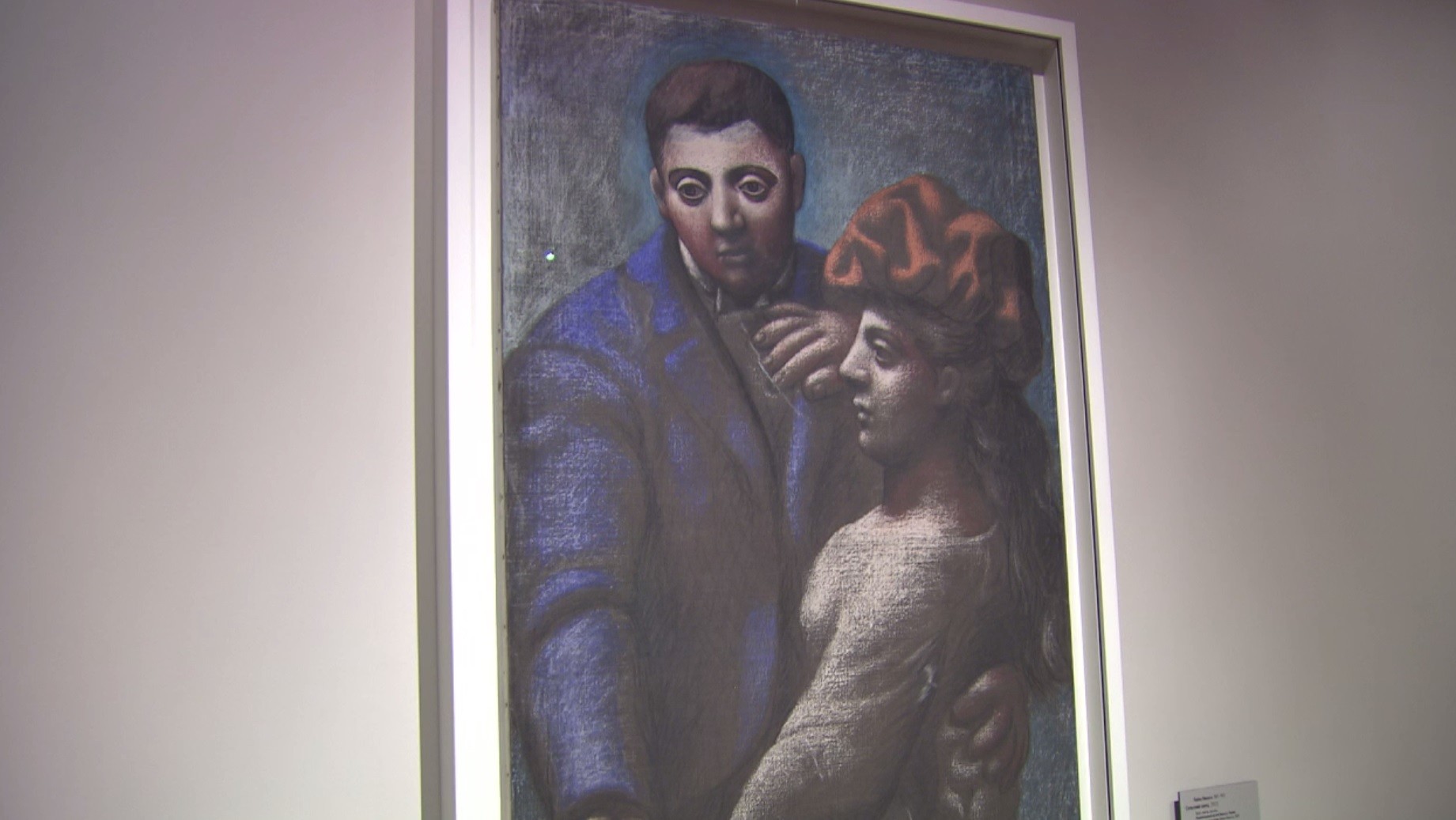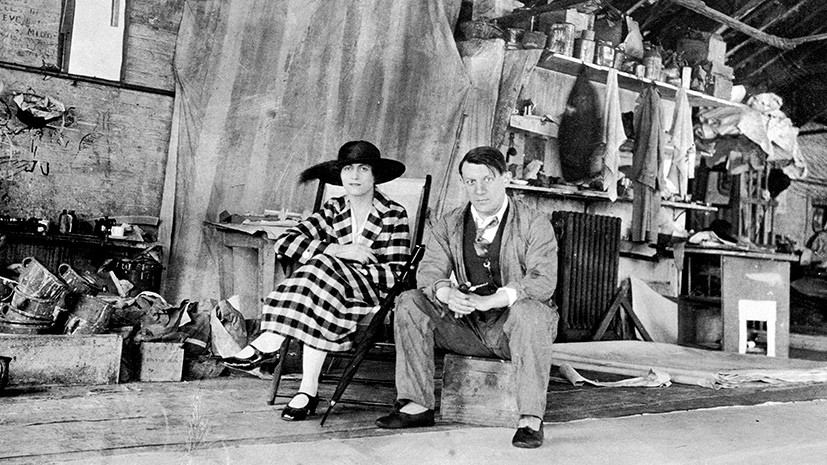On Tuesday, November 20, in the main building of the A.S. Pushkin opened the exhibition "Picasso & Khokhlova", dedicated to the relationship of the artist Pablo Picasso and his first wife, Russian ballerina Olga Khokhlova.
The exhibition features over 200 exhibits, including panels, letters, postcards and furniture. In addition to the Russian side, the FABA foundation, led by grandson of Picasso and Khokhlova Bernard Ruiz-Picasso, and the director of Hunter College galleries Joachim Pissarro took part in the preparation of the event. Most of the exhibited works of art and graphics were provided by the National Picasso Museum in Paris.
Moscow exhibition in the Pushkin Museum of Fine Arts. Pushkin was preceded by a Parisian, timed to coincide with the 100th anniversary of the artist and the ballerina. It was held at the National Museum in 2017.
Marriage as a change of image
Moscow exhibition consists of 11 sections. By them you can track how the relationship between Picasso and Khokhlova changed from the moment of the meeting to the break.
Pablo Picasso and Olga Khokhlova met in Rome, in February 1917, during the preparation of the ballet Parade with the Russian Ballets troupe Sergei Diaghilev. After a year and a half, they get married in the Russian church in Paris - this is how their rich family life begins.
According to the curator of the exhibition, senior researcher at the Pushkin Museum Alexei Petukhov, the marriage became for Picasso and for Khokhlova a "project of a radical change of image."

The art historian emphasizes that at the time of the meeting with his future wife, Picasso was a Bohemian man and at the same time a closed, mysterious artist, alchemist of cubism, who destroyed and re-created the world on his canvases. Having fallen in love with the ballerina, he became a singer of classical beauty and traditional values. According to him, it seemed that Picasso humbled his avant-garde temperament and became a member of traditional society.
“Like music and painting come together in this marriage union. Together they reaped the fruits of the growing glory of Picasso. New dealer, new aristocratic patrons of art, new patrons, new collectors, new social position. Balls, festivals, high life. All this brilliance is now surrounded by Picasso and Olga, ”said Petukhov.
However, it was not just the spouse who influenced the changes in the artist’s work. Time contributed to the mite: the beginning of the novel by Picasso and Khokhlova took place against the backdrop of the end of World War I, at a time when "the world was tired of destruction."
One of the symbols of destruction in art was the direction of avant-garde, including cubism. Cubism became soft, decorative, and the most avant-garde artists turned into adherents of a rethought tradition - the values of the tradition turned out to be more attractive than the strict rules of the avant-garde. Picasso led the process, which is known in art as a time to return to order. And Olga's epoch in the artist's work coincided with these common French and all-European tendencies.
"Tragically single woman"
In this manner, Picasso "lasted" 7-8 years. He was interested to move on, to understand the new possibilities of the tradition. However, notes Petukhov, together with the weakening of feelings between Picasso and Khokhlova and the new perspectives associated with the art of surrealism that loomed to the artist, he changes his style. At the same time, his life turns over: there is a crack in the relationship between the artist and the ballerina, the conflict develops and leads to a complete rupture.

- © Fine Art Images / Heritage Images / Getty Images
In 1927, Picasso met seventeen-year-old Maria Theresa Walter and began to secretly meet with her. In June 1935, Picasso and Khokhlova were leaving, and in September, Walter and the artist gave birth to a daughter.
Despite the end of the relationship, until the death of Khokhlova, she and Picasso remained officially married: on the one hand, says Petukhov, Olga did not want a divorce - she was going to remain faithful to her lover until the end. And Picasso was a citizen of Spain, where divorces were prohibited by law. And of course, he did not want to share with her the property acquired over the years of living together.
Khokhlova until his death remained attached to the artist. She wrote letters to her husband and sent photos of their common son.
“Of course, she became a tragic figure, a tragically lonely woman in an abandoned castle, whose yard was overgrown with grass. She went there in a dress with a veil that looked like a bridal outfit and was photographed against this background. They tell about the persecution, about Olga’s aggression towards Pablo. But I think that this is rather such a quiet sadness - akin to that melancholy that she had in the 1920s. But this melancholy was expanding and eventually completely filled Olga’s life and deprived her of strength. No wonder Picasso survived it for almost 20 years, ”concluded Petukhov.
Letters from the chest
After the death of Olga Khokhlova, a large travel case, which was called the “Olga's Chest”, remained as a legacy of her family. For a long time its contents remained untouched. Only years later, the grandson of the artist and ballerina Bernard Ruiz-Picasso opened his suitcase and found there photographs of Picasso and Khokhlova, letters in Russian and French, ballet pointe shoes and many other things — property that the ballerina kept after breaking up with her husband.

- © Archive Photos / Getty Images
It is Khokhlova's correspondence with her relatives that is the main key to understanding her character and changes in the works of Picasso. After the revolution and the Civil War, the family of the ballerina was scattered throughout Europe. The relatives who remained in the Soviet Union were extremely poor and unhappy, but Khokhlova could not help them fully.
“Olga suffered, and this sadness was constantly present in her life. She pursued her and poisoned her life, including family life with Pablo Picasso. No wonder one of the sections of the exhibition was called "Melancholy." Olga was guilty of guilt: compared to her relatives in Soviet Russia, from whom she received these fragmentary messages, she was too good. And she kept these testimonies in her trunk, ”said Petukhov.
Another curator of the exhibition, art historian Joaquin Pissarro, who Bernard Ruiz-Picasso allowed to investigate these letters, said that Khokhlova's correspondence with his mother made the biggest impression on him.
“Olga's mother Lydia, with whom she was very close, constantly hoped that Olga would return to Moscow. But this did not happen ... At some point, Lydia wrote to her daughter: "Ah, I understand, your husband does not want you to return to Moscow." And this one line gives us an idea of all that hardest drama ... We can only assume that Picasso thought about it. But, probably, he was not eager to let Olga go - the artist loved to control everything, everything had to revolve around him. Therefore, the return was excluded. It seems to me that it was after all this that Olga lost hope and slowly began to fade, ”noted Joaquin Pissarro in an interview with RT.
The exhibition "Picasso & Khokhlova" in the Pushkin Museum to them. A.S. Pushkin will last until February 3, 2019.
